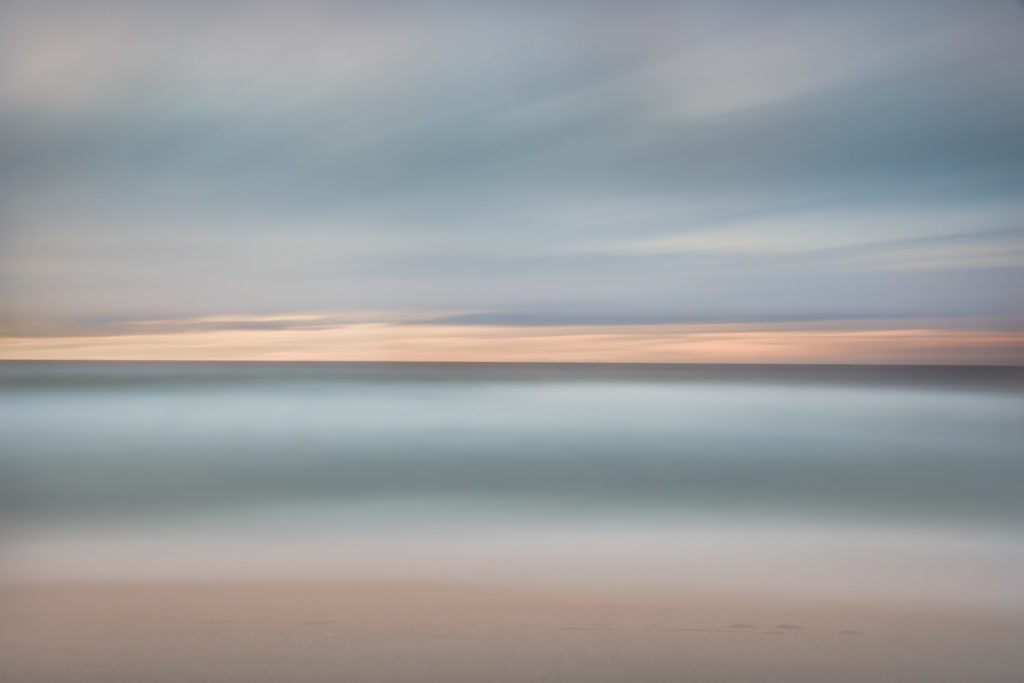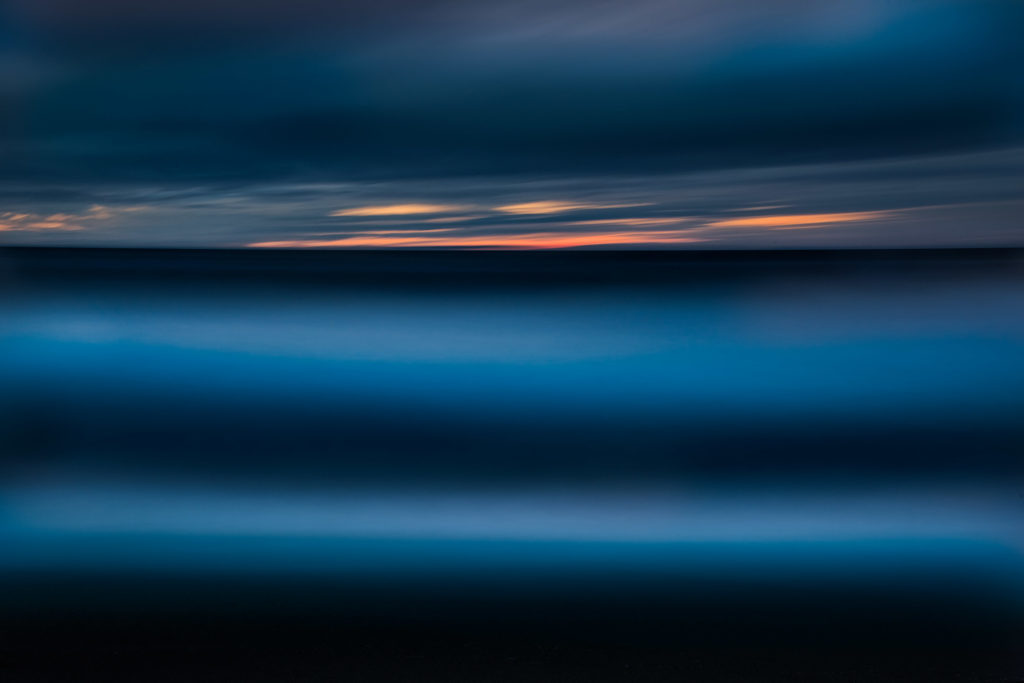In the practice of modern photography, an exposure as long as five minutes duration during daytime hours seems like eternity. This is particularly true in the context of the raging Pacific Ocean along the outer beaches of Point Reyes, which is always churning and in frantic motion.
To achieve this effect near sunset on South Beach, with my camera on a tripod, I added a +4 neutral density filter, a polarizer, and lowered the ISO while stopping the lens down (I’ve noted the full exposure data below; these exposures shifted as the scene got darker).
From a visual viewpoint, the long exposure time reduces the seascape of beach, waves, and sky to elemental horizontal lines—perhaps almost a landscape in the sense that a Rothko color field painting is a landscape. Looking at this in another way, the long exposure time performs a kind of mathematical role, and reduces the random chaos of the storm-tossed inter-tidal zone to the basic overall patterns, teasing out consistency where nature produces apparent chaos.

Exposure data: Both images Nikon D810, +4 ND filter, circular polarizer; Upper image: 44mm, 299 seconds at f/29 and ISO 31; Bottom image: 65mm, 299 seconds at f/16 and ISO 64.

Related story: Face of the Deep.
Ryan Kimball
13 Dec 2016I love these long exposure wave images. Very inspirational. Ive tried some with a 10stop nd filter at midday and have so far created a few images i’m pleased with. Ive yet to try it with a polarizer and need to go later in the day. Even stopped down and with the 10stop im getting between 10 and 15 sec exposures at base iso. Long enough to be interesting but not long enough to really abstract. Also I saw one of your large prints of this series at the flower workshop and it was gorgeous! Thanks for sharing Harold.
Pingback: My Best of 2016
Pingback: Through a Window with Selective Focus
Pingback: Long Exposure Waves
Pingback: Splitting up my Long Exposure Waves workshop